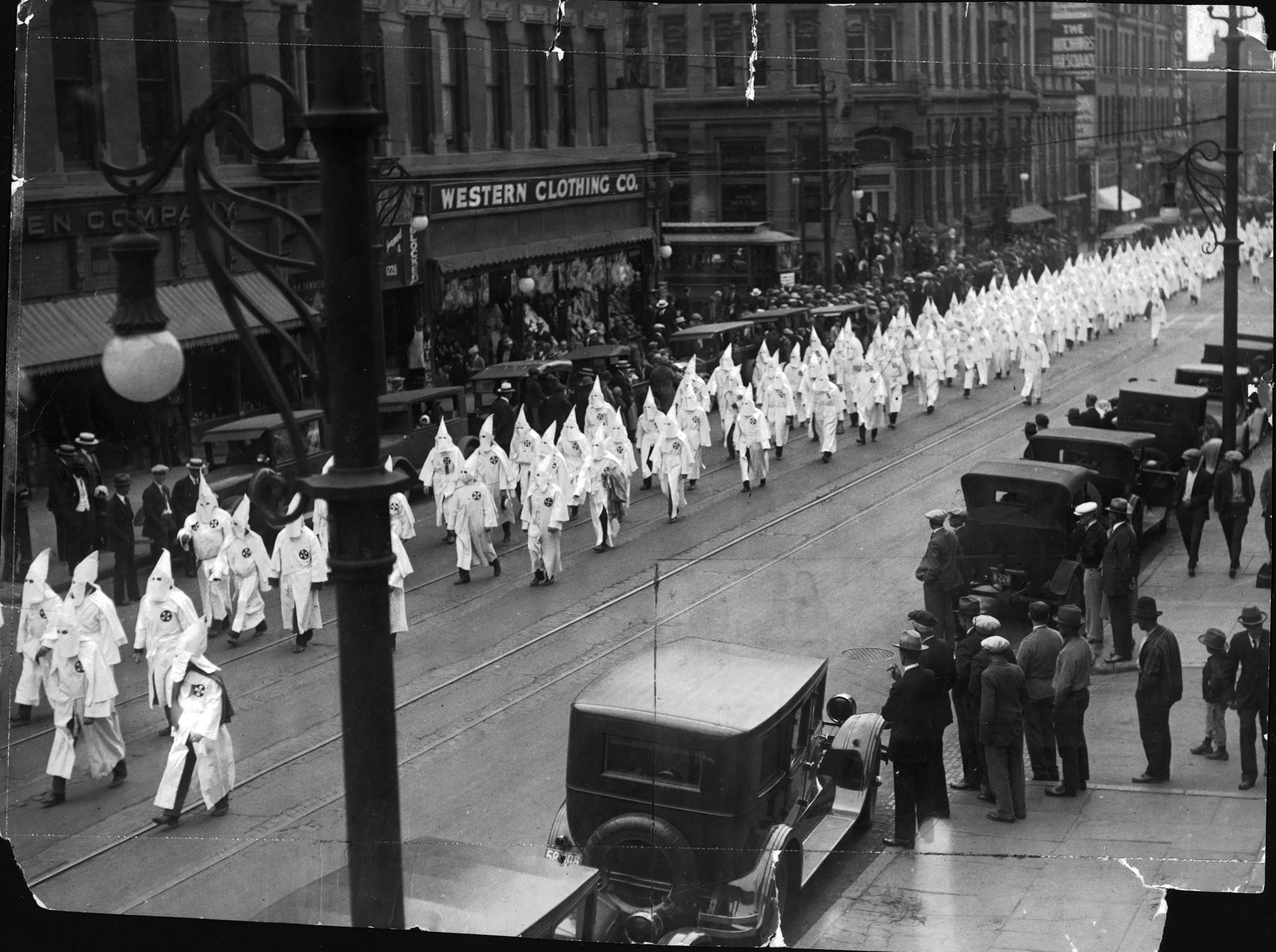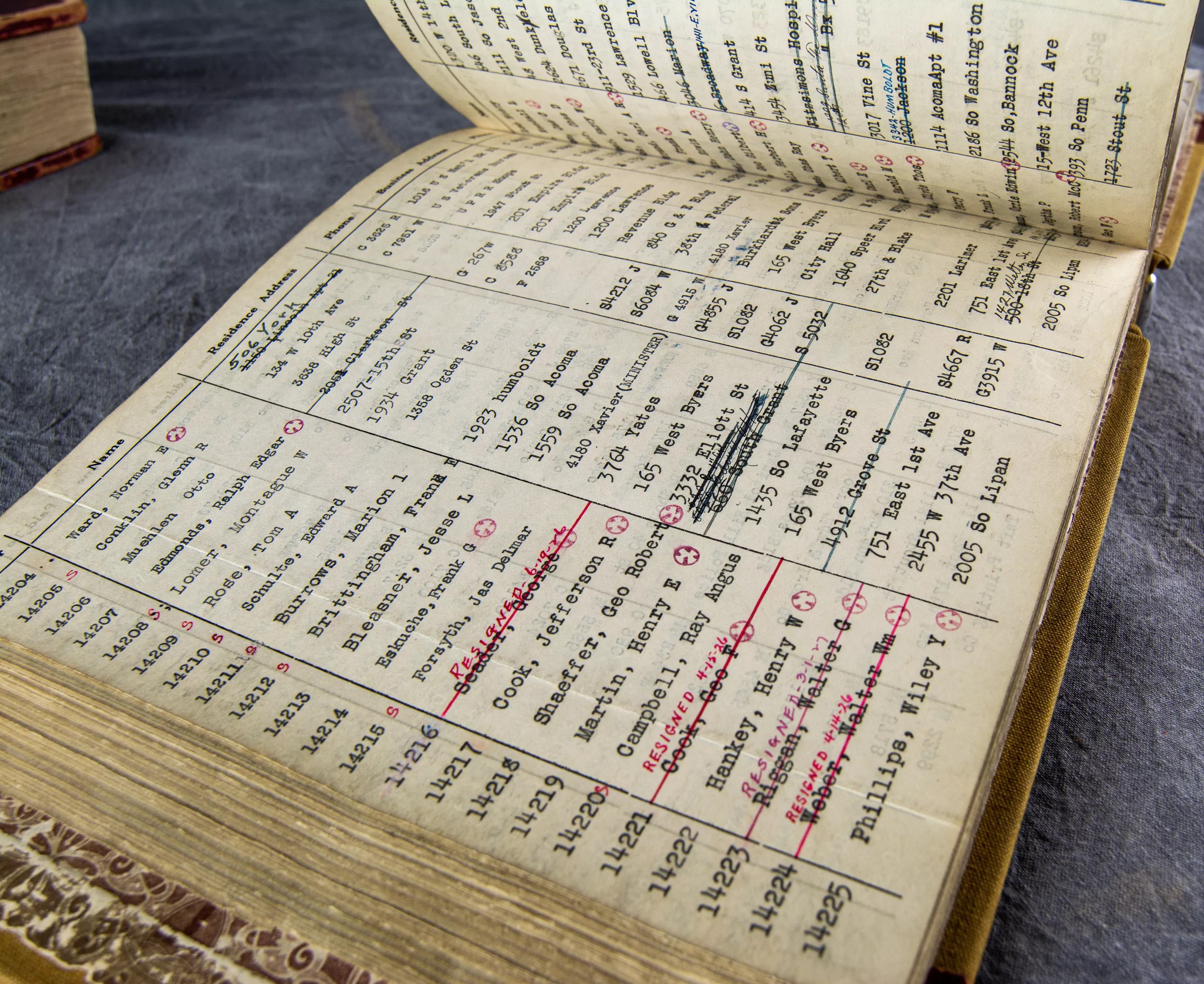
History Colorado

Audio By Carbonatix
For eighty years, the state historical society had two thick ledgers in its possession that went largely unnoticed by anyone other than researchers who knew what they were looking for. The ledgers belonged to a private organization and included details about the men who’d attended meetings of that organization, including their names, addresses, professions and whether they’d paid their membership dues.
“The sort of thing you would expect any organization to keep,” explains Jason Hanson, chief creative officer and director of interpretation and research at History Colorado, “but then you know which organization.” It was the Ku Klux Klan, which had a strong grip on the centers of power in Colorado in the mid-1920s.
History Colorado recently digitized the two ledgers: KKK membership books mainly for metro Denver, but also covering other parts of Colorado, likely from 1924 to 1926. The ledgers include about 30,000 names of people affiliated with the KKK, and underscore just how prominent the Klan was then; with digitization, this information is now readily available.
“In the last year or so, our curators decided that enough time had passed that we could consider making them more broadly available, particularly as the protests started over racial justice,” Hanson says. “This is work that History Colorado can do for greater equity and racial justice.” A federal grant covered the cost of digitization.
“The fact that the ledgers list places where people work makes this just one of the best tools I’ve ever seen for showing what we’re talking about when we say systemic racism,” Hanson says. The ledgers include people who worked at the Capitol, the Denver police and fire departments, and even the State History Museum, a predecessor of the History Colorado Center at 1200 Broadway.

Ben Stapleton was elected mayor of Denver in 1923, when he was a leading member of the KKK.
Denver Public Library
One-time Denver police chief William Candlish and former governor Clarence Morley are in the ledger, as is Mayor Ben Stapleton. During the racial justice protests last summer, residents of the Stapleton neighborhood decided to change the name of the area to Central Park. “Researchers are going to find other prominent names,” Hanson predicts.
The Ku Klux Klan was a mainstream movement in Colorado in the 1920s with its anti-Catholicism, anti-Semitism and anti-Black stances, according to Bob Goldberg, a University of Utah professor who used the ledgers to research his book Hooded Empire: The Ku Klux Klan in Colorado.
“The Klan ran a wrestling match, it ran motor car races, it had a big picnic for 20,000 people,” he says. “The Klan was out. The Klan was on KOA radio. They were in control of Denver, and they had no compunction about showing their control.”

The ledgers are filled with close to 30,000 names.
History Colorado
In fact, the largest ‘Klaverns’ in the United States in the 1920s were located in non-Southern states such as Pennsylvania, Indiana, Illinois, California and Colorado, Goldberg notes. The majority of Klan members in Colorado were skilled or white-collar workers rather than unskilled workers, he adds, and primarily married men in their thirties.
A Rocky Mountain News reporter gave the ledgers to the state historical society in 1940; they’d belonged to Colorado KKK Grand Dragon John Galen Locke. “We took them in from that reporter, but the curators at the time decided that they’d be too controversial, too explosive to display, to make available,” says Hanson. “Those curators put a fifty-year hold on the ledgers.”
In the 1990s, History Colorado started making the ledgers available to researchers via microfiche, but didn’t advertise the fact that it had the ledgers. “We all know there’s a big difference between coming to a research center in a museum and scrolling through on microfiche versus being able to search it from the comfort of your home,” Hanson notes.
In preparing to unveil the ledgers, History Colorado worked with an array of community advisors, including many who “may have had ancestors targeted by the Klan,” Hanson explains.
“We worked with them to make sure that when we released these, we were doing them with the right context, that we heard their stories of resistance to this organized hate, and that we were prepared to share those, and it really was a wonderful collaboration.”
The State Historian’s Council will discuss the ledgers during “Lifting the Hood: Denver’s KKK Ledgers,” a free online program at 7 p.m. Wednesday, April 28; register here.